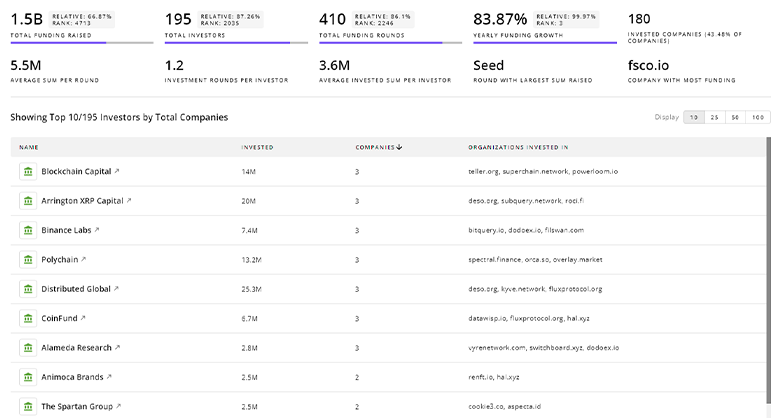
Remote Healthcare Report
: Analysis on the Market, Trends, and TechnologiesThe remote healthcare domain represents a significant evolution in the healthcare industry, as it leverages technology to deliver medical services from a distance. This trend has seen substantial growth, with a trend size of 68.78, indicating a robust adoption rate. Despite being relatively young with a trend maturity of 16.30, remote healthcare demonstrates potential for further expansion. The domain encompasses a broad scope, including annual growth, publication propagation, and company signal strength. Market analysis shows a medium-strong trend signal, with a notable investment of approximately $1.82 billion. With 351 companies and a workforce of over 20,000, the sector is poised for dynamic growth and offers significant opportunities for businesses to invest and form partnerships.
This report was last revised 28 days ago. See a missing piece? Your input can help — contact us.
Topic Dominance Index of Remote Healthcare
The Dominance Index of Remote Healthcare looks at the evolution of the sector through a combination of multiple data sources. We analyze the distribution of news articles that mention Remote Healthcare, the timeline of newly founded companies working in this sector, and the share of voice within the global search data. All this combined gives a dominance index distribution of Remote Healthcare relative to all known Trends and Technologies.
Key Activities and Applications
- Provision of medical services remotely, enhancing accessibility and convenience for patients.
- Addressing healthcare disparities and improving patient outcomes while reducing costs.
- Integration with electronic medical records and other software solutions for seamless workflow.
- Development of wearable devices for psychiatric illnesses and brain signal analysis.
- Implementation of telemedicine platforms and virtual consulting rooms for remote patient care.
- Utilization of smart technology for presence detection and occupancy count in healthcare facilities.
- Expansion of remote job opportunities within the health tech space.
Emergent Trends and Core Insights
- A growing trend towards telehealth and virtual primary care, indicating a shift in patient care delivery models.
- Increased use of biometrics monitoring and patient analytics for personalized healthcare services.
- Significant percentage growth in news coverage, reflecting rising public and market interest.
- A trend towards home care and aging-in-place solutions, facilitated by remote healthcare technologies.
- Investment from notable entities such as the National Science Foundation, indicating confidence in the sector's potential.
- A negative growth trend over a five-year period, suggesting challenges that need addressing for sustained growth.
Technologies and Methodologies
- Telemedicine and digital consulting technologies, enabling healthcare professionals to provide care globally.
- Wearable technologies integrated with AI for disease treatment and vital signs monitoring.
- Smart sensors and IoT devices for health data collection and remote patient monitoring.
- Cloud-based platforms for healthcare management, facilitating data-driven clinical decisions.
- Mobile health applications providing on-demand access to healthcare professionals and services.
- Advanced software solutions for managing patient engagement and healthcare delivery remotely.
- Virtual reality and immersive technologies for medical education and training.
The remote healthcare ecosystem is multifaceted and rapidly evolving. Companies and projects within this domain are engaged in a variety of activities aimed at enhancing patient care through technology. From wearable devices to telemedicine platforms, the focus is on increasing accessibility and personalization of healthcare services. Emergent trends such as biometrics monitoring and virtual primary care are shaping the future of healthcare delivery. Investments in the sector and the involvement of significant players demonstrate the potential for growth and innovation. Technologies such as AI, IoT, and cloud-based platforms are central to the advancement of remote healthcare, offering new methodologies for patient engagement and care management. The overall ecosystem is characterized by a commitment to improving health outcomes and making healthcare more efficient and accessible to all.
Remote Healthcare Funding
A total of 88 Remote Healthcare companies have received funding.
Overall, Remote Healthcare companies have raised $804.8M.
Companies within the Remote Healthcare domain have secured capital from 226 funding rounds.
The chart shows the funding trendline of Remote Healthcare companies over the last 5 years
Remote Healthcare Companies
Uncover actionable market insights on 327 companies driving Remote Healthcare with TrendFeedr's Companies tool. The feature offers comprehensive data on innovative companies and technologies, essential for those looking to innovate and disrupt their industries.

327 Remote Healthcare Companies
Discover Remote Healthcare Companies, their Funding, Manpower, Revenues, Stages, and much more
Remote Healthcare Investors
Get ahead with your investment strategy with insights into 74 Remote Healthcare investors. TrendFeedr’s investors tool is your go-to source for comprehensive analysis of investment activities and financial trends. The tool is tailored for navigating the investment world, offering insights for successful market positioning and partnerships within Remote Healthcare.

74 Remote Healthcare Investors
Discover Remote Healthcare Investors, Funding Rounds, Invested Amounts, and Funding Growth
Remote Healthcare News
TrendFeedr’s News feature offers access to 1.9K news articles on Remote Healthcare. The tool provides up-to-date news on trends, technologies, and companies, enabling effective trend and sentiment tracking.

1.9K Remote Healthcare News Articles
Discover Latest Remote Healthcare Articles, News Magnitude, Publication Propagation, Yearly Growth, and Strongest Publications












